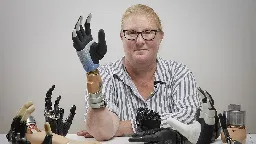‘Groundbreaking’ bionic arm that fuses with user’s skeleton and nerves could advance amputee care
‘Groundbreaking’ bionic arm that fuses with user’s skeleton and nerves could advance amputee care

www.euronews.com
This ‘groundbreaking’ bionic arm fuses with the user’s bone and nerves

‘Groundbreaking’ bionic arm that fuses with user’s skeleton and nerves could advance amputee care::The bionic arm has been working for years, reducing the user’s level of pain. The first person to receive it tells how life changing it has been.
